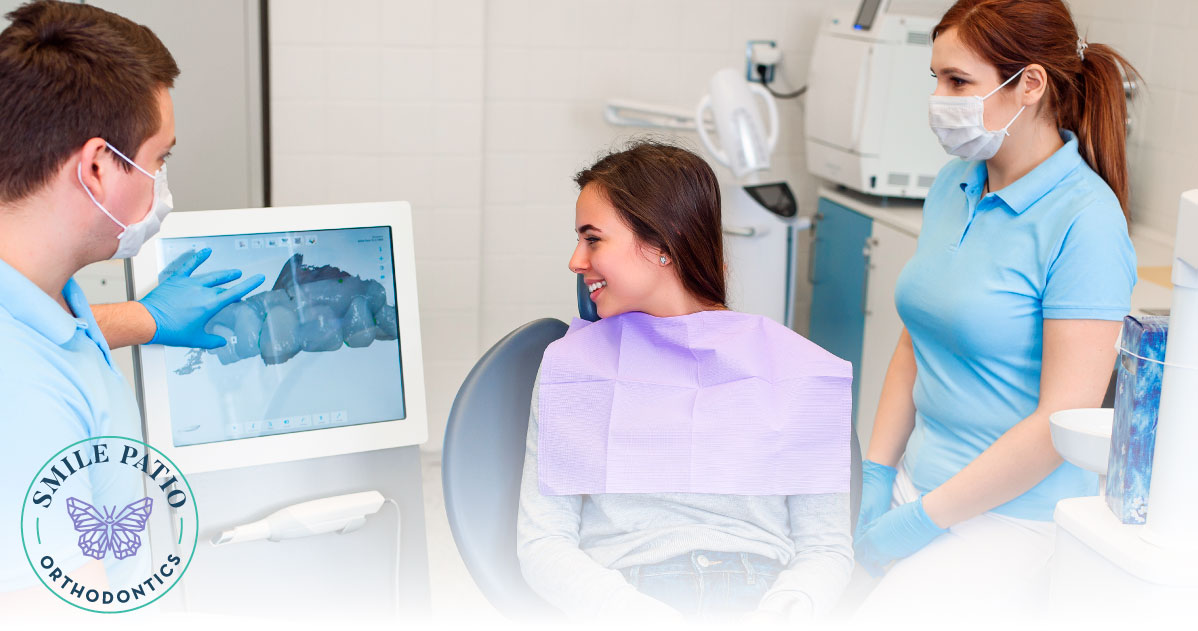Proper planning is essential to ensure the success and effectiveness of orthodontic treatment Vista.
Orthodontic treatment plays a crucial role in improving oral and overall health. It involves diagnosing, preventing, and correcting misaligned teeth and jaws.
Firstly, orthodontic treatment helps correct various dental issues such as crooked teeth, overcrowding, overbites, underbites, and crossbites. Aligning the teeth and jaws promotes proper chewing, speech, and appearance.
Orthodontic treatment even contributes to improving digestion and overall oral function. Additionally, orthodontic treatment significantly impacts a person’s confidence and self-esteem by helping with facial symmetry.
Proper planning is vital in orthodontic treatment to ensure optimal results. A comprehensive evaluation of the patient’s dental and facial structures is in order for orthodontists to understand their specific needs.
Through careful planning, orthodontists can determine the most appropriate treatment approach, whether it involves braces, aligners, or other orthodontic appliances.
Planning also includes considering the patient’s age, growth, development patterns, and any underlying oral health conditions. This information helps orthodontists design a personalized treatment plan tailored to the patient’s unique needs, ensuring the best possible outcomes.
Proper planning enables orthodontists to anticipate and manage any potential complications that may arise during treatment. It allows us to better calculate the treatment length, the need for extractions or surgical interventions, and the establishment of realistic treatment goals.
What Are the Latest Orthodontic Technologies Available at the Smile Patio Orthodontics?
The field of orthodontics has seen remarkable advancements in technology, revolutionizing the way treatments are carried out.
These advancements encompass various areas, including scanning methods, material developments, and biomechanics, leading to improved comfort, aesthetics, traction, and other benefits.
Scanning methods
Traditional dental impressions using putty are being replaced by digital scanning techniques such as intraoral scanners. These scanners use advanced imaging technology to create precise 3D digital models of the patient’s teeth and oral structures.
Intraoral scanners offer numerous advantages, including increased accuracy, faster scanning times, improved patient comfort, and the ability to visualize treatment progress digitally.
Materials Developments for Braces and Invisalign
Traditional metal braces have undergone significant advancements. Now, smaller and more aesthetically pleasing brackets are available, using materials such as ceramic or composite, which blend better with the natural color or teeth.
The introduction of self-ligating braces eliminates the need for elastic bands, reducing friction and allowing for more efficient tooth movement.
These advancements provide patients with increased comfort and better aesthetics during orthodontic treatment.
Patients also have Invisalign, a popular alternative to traditional braces, which has seen notable advancements. Invisalign now makes its aligners from a more durable and transparent material, making them less noticeable and more resistant to staining.
Also, the development of SmartTrack material has enhanced the aligners’ fit, allowing for better control and predictable tooth movements.
Biomechanics
Biomechanical advancements focus on optimizing tooth movement and reducing treatment duration.
For instance, the use of customized orthodontic wires, such as shape-memory wire, allows for precise and controlled tooth movement. These wires apply constant, gentle forces to the teeth, reducing discomfort and enhancing treatment efficiency.
The incorporation of temporary anchorage devices (TADs) enables orthodontists to achieve more complex tooth movements without relying solely on patient compliance or extractions.
What Are the Stages of Orthodontic Treatment?
When a patient decides to start orthodontic treatment in Vista, they have to know that it takes years. Teeth straightening involves several stages, each essential for achieving optimal results.
Initial Consultation and Planning
During this stage, the orthodontist conducts a comprehensive examination of the patient’s teeth, jaws, and facial structures.
This includes taking digital scans of the teeth using intraoral scanners, which provide accurate 3D for treatment planning.
Treatment Plan Development
Based on the examination and scans, the orthodontist develops a personalized treatment plan. Advanced software programs analyze the digital models, allowing for precise tooth movement simulations and the creation of customized treatment strategies.
Orthodontic Appliance Placement
This stage involves the placement of orthodontic appliances, such as braces or Invisalign aligners.
For traditional metal braces and clear ceramic braces, the process is pretty similar. The orthodontist will fix the brackets to your teeth with special dental glue. Then the wires come in to adjust and press your teeth.
The process is different for Invisalign patients. Your orthodontist will only apply small attachments to your teeth so the invisible molds can hold properly.
Then your doctor will put the aligners for the first time to avoid hurting your teeth’s enamel with the pressure.
Active Treatment
This phase involves the active adjustment and monitoring of the orthodontic appliances.
For braces, orthodontics wires made of nickel-titanium (NiTi) or other advanced materials are the ones in charge of applying gentle, controlled forces to move the teeth.
In the case of Invisalign, patients progress through a series of aligners that follow the smile design thanks to precise movements.
Dental Checkups
Throughout the treatment, regular appointments are mandatory to monitor progress and make necessary adjustments.
Digital scans can be taken at each visit using intraoral scanners, providing instant feedback on the tooth movement and treatment progress. This helps the orthodontist track the effectiveness of the treatment and make any required modifications.
Wearing Retainers
Once the teeth are in their correct positions, the active phase of treatment ends, though technically, patients are still under treatment.
Retention devices, such as retainers, are mandatory to help maintain the new position of the teeth. Technological advancements in retention include digitally fabricated retainers that offer a more precise fit and enhanced patient comfort.
What Are the Main Orthodontic Braces Technology Advancements?
Orthodontic braces have undergone significant technological advancements that are changing the experience of orthodontics for patients.
Bracket Positioning for Smile Arc Protection
New advanced software programs and digital simulations allow orthodontists to precisely position brackets on the teeth, taking into account the natural smile arc.
This helps achieve optimal aesthetics and a harmonious smile.
Translucent Polycrystalline Alumina (TPA) Brackets
TPA brackets are made of a translucent material that blends with the natural color of teeth, making them less noticeable compared to traditional metal brackets.
Of course, these brackets offer an esthetical plus during treatment.
NiTi (Nickel-Titanium) Wires
We mentioned NiTi wires above, but let’s explain the benefits they bring.
NiTi wires have shape memory and superelastic properties. These wires exert gentle, continuous forces on the teeth, allowing for more comfortable tooth movement and reducing the need for frequent wire adjustments.
What Are Clear Aligners Technological Innovations?
3D Printing Technology
Besides intraoral scanners and Invisalign SmartTrack material, Invisalign also brings to the table its 3D printing technology.
The digital treatment plan developed for each patient comes as a series of aligners using this technology. 3D printing ensures precise manufacturing and customization of aligners for each individual’s treatment needs.
Aligner Tracking Features
Invisalign aligners incorporate small blue compliance indicators or “wear indicators” that fade over time.
These indicators help both patients and orthodontists monitor wear time and ensure the aligners are being worn correctly for optimal treatment progress.
State-Of-The-Art Orthodontics Near You
The Smile Patio Orthodontics is a dental home for the family in the heart of Vista, California.
Dr. Albaugh is in charge of conducting treatment here and helping adults and children achieve their dream smiles.
Oral health is the primary focus which is why the list of services ranges from different types of braces to Invisalign and orthodontic solutions for patients of all ages.
Set an appointment and get closer to a healthier smile!




